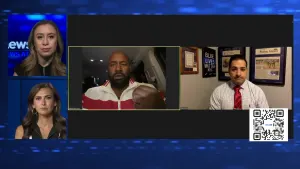More Stories
News 12 cameras were given rare access to the NYPD's Police Academy in Queens.
NYPD Chief Of Training Kenneth Corey tells News 12's Katie Lusso that all NYPD recruits go through six months of training at the academy before being sent out in the field.
MORE: Justice for All
Corey says in those six months, recruits go through a total of 913 hours of training: 269 hours focused on academics, 150 hours on physical tactics, 105 hours on firearms and 28 hours on driver training. The additional 361 hours are used for additional add-on trainings and presentations.
Corey says when it comes to firearms training, the officers "don't shoot to kill. We teach them to shoot to end the threat. We teach them to shoot center mass, so that's the torso area of the body because it is the largest area of the body ." He says the officers then immediately render aide.
In order to graduate, the recruits must pass the Job Standards Test. It includes, climbing over a 6-foot wall, a stair climb, a physical restraint simulation, a pursuit run , a 180-pound dummy drag, and a trigger pull.
Once they graduate, Corey says the officers are assigned a field training officer for six months. They remain on probation for two years. Beyond that, officers are brought back in for training at least five days a year. They receive refresher training on their firearms at least twice a year and on their Tasers at least once a year.
The academy itself has many different training opportunities. Some of the rooms have been transformed into different scenarios, such as a New York City street and even apartments with different layouts. In one of the classrooms, recruits responded to a call of an emotionally disturbed man on a subway.
In another room, some recruits were using the Force Options Simulator. On the screen, different scenarios play out that are meant to simulate a situation where an officer would need to use force. Corey says the officers "have a lot of tools in their toolbox, including your communication skills." He says the recruits must decide which one to use in each scenario. The chief says the word communication is key, because it plays a huge role when it comes to deescalating a situation, but admits "there's no way that we can tell these officers, if this happens, your response is that.". He says what might work perfectly in one situation might not work at all in the same exact situation 30 minutes later.
The NYPD requires 913 hours of training for their new recruits, which is higher than the New York state-mandated requirement of 700 hours. Alex Vitale, a professor of sociology and coordinator of the Policing and Social Justice Project at Brooklyn College, says "training of police in the United States is a fraction of what police receive in other parts of the world."
News 12 did some digging and found that training across the United States greatly varies. In Mississippi, the state only requires 480 hours of training. However, city to city varies as well.
On the global level, some countries such as Finland and Germany require their new police officers to go through more than two years of training.
Vitale says "much police training in the United States is militaristic." He says "police are largely on their own making discretionary decisions, but our police training hasn't really caught up to this reality."
Chief Corey says that the NYPD has changed drastically over the years. He says "everything we do here centers around deescalation and that's fairly new. We've only been doing that for six or seven years now.".
He says it was after the death of Eric Garner in 2014 that the word deescalation became a big part of NYPD training. Corey says they "retrained all 36,000 police officers in New York City." He says "they were all brought back for three days worth of training. They got training in deescalation and they got a refresher course in physical tactics being able to take a resisting suspect in to custody safely.".
In 2016, Corey says the use of force policy was rewritten. For the first time, it includes the phrase "duty to intervene". What this means is any officer who witnesses another officer using excessive force must intervene.
He says George Floyd's death was "horrific and mind-bogling to anyone in law enforcement.". After Floyd died, there were massive protests across the country calling for police accountability and reform. Corey says in New York City the NYPD's response to the protests drew harsh criticism from the public, the Department of Investigation and the police unions who claimed the officers were sent out into the protests poorly trained. He says union leaders "were right." Corey says they implemented a new training this past summer called constitutional policing at community events. He says "it focuses on protecting people's right to protest and the five freedoms guaranteed by the First Amendment.".
Vitale says even with the recent changes, there needs to be change when it comes to the way police are used. He says "we need to get the police out of a lot of the circumstances that lead to harmful interactions with the public, like responding to mental health calls, policing school corridors and dealing with homelessness." He says a lot of what police respond to could be turned over to "institutional and community-based response," adding "we could easily cut policing in half in New York and be safer and healthier than we are today.".
Corey questions if it should be the police who respond to somebody in a mental health crisis, saying "should they be the first responders? Maybe not."
In the past year, those conversations, conversations about defunding and even abolishing police have been at the forefront of many of the protests. Corey says the department has been discussing "reform internally forever, as long as I've been here." He says, "We change all the time. If we want to redefine what policing should like, absolutely. But, I'll say we have to get that model in place and not create a vacuum. So, the Yankees wanted a new stadium built. They didn't tear down the old one until the new one was up."
Reporting and text by Katie Lusso
More from News 12
3:49
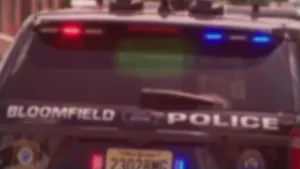
Grand jury declines to file charges against police officers who shot motorist in New Jersey
3:50
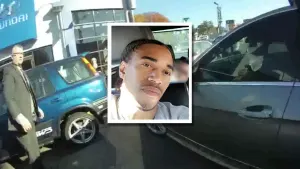
Shooting of unarmed motorist by Bloomfield police will be investigated by grand jury
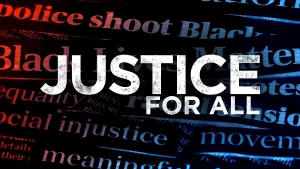
Justice For All Town Hall: Has anything changed in NYC since George Floyd was killed by police?
3:50
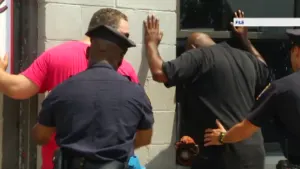
Justice for All: An in-depth look at the NYPD’s neighborhood policing program
5:07
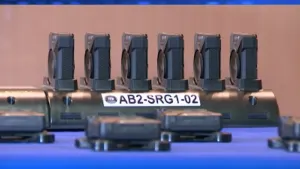
Justice for All: Despite massive body camera rollout, questions about transparency remain
6:15
